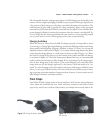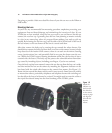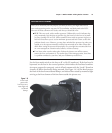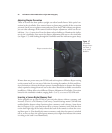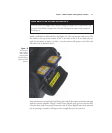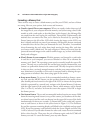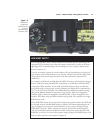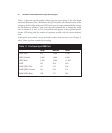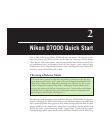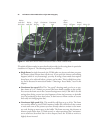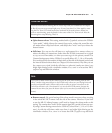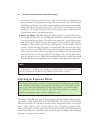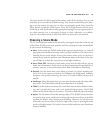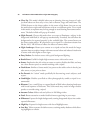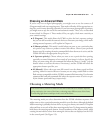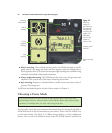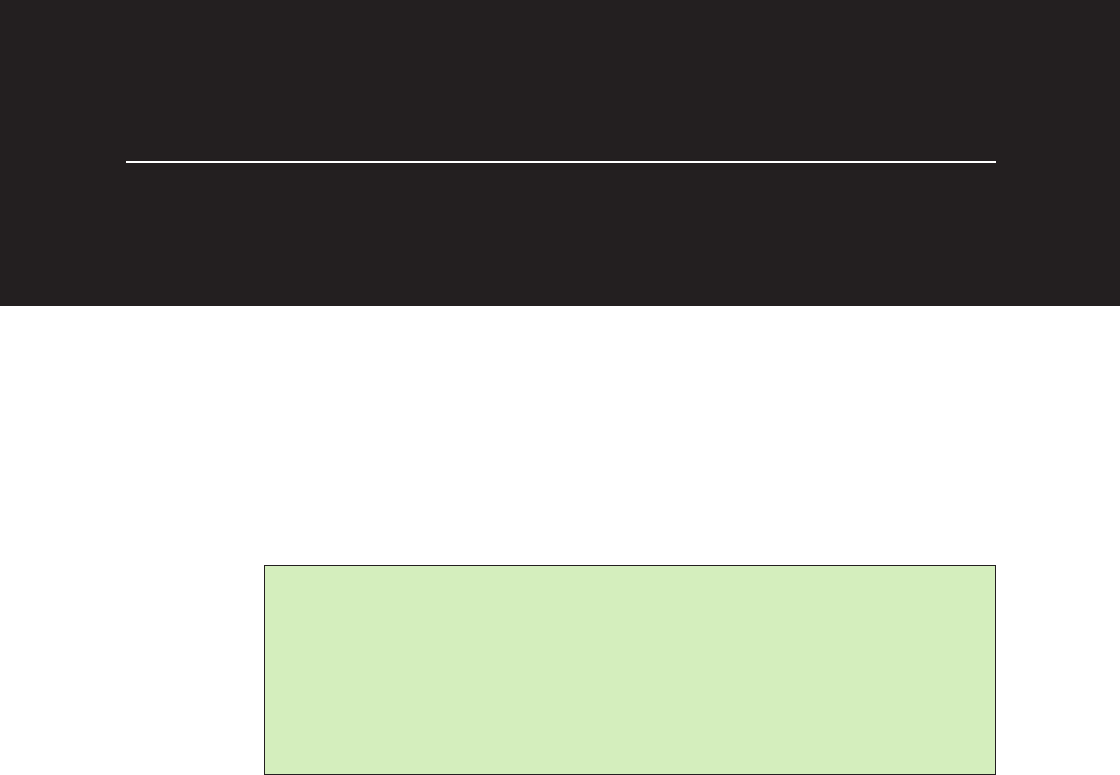
Now it’s time to fire up your Nikon D7000 and take some photos. The easy part is turn-
ing on the power—the Off-On switch is on the right side, concentric with the shutter
release button. Turn on the camera, and, if you mounted a lens and inserted a fresh bat-
tery and memory card—as I prompted you in the last chapter—you’re ready to begin.
You’ll need to select a release mode, exposure mode, metering mode, focus mode, and,
if need be, elevate the D7000’s built-in flash.
Choosing a Release Mode
2
Nikon D7000 Quick Start
This section shows you how to choose from Single frame, Continuous mode, Self-timer
mode, Remote control mode, “quiet” mode, and a special vibration-damping Mirror Up
(Mup) mode. Unless you have need of burst shooting or the self-timer, you can set your
camera to Single frame mode and skip ahead to “Selecting an Exposure Mode” (next).
Just press the release mode dial lock release button at the 7 o’clock position on the release
mode dial (at the top-left edge of the camera) and rotate to the first, or S position, if it’s
been changed to something else. (See Figure 2.1.)
The shooting mode determines when (and how often) the D7000 makes an exposure.
If you’re coming to the dSLR world from a point-and-shoot camera, you might have
used a model that labels these options as drive modes, dating back to the film era when
cameras could be set for single shot or “motor drive” (continuous) shooting modes. Your
D7000 has seven release (shooting) modes: Single frame, Continuous low speed,
Continuous high speed, Quiet shutter release, Self-timer, Remote control, Mirror Up.



